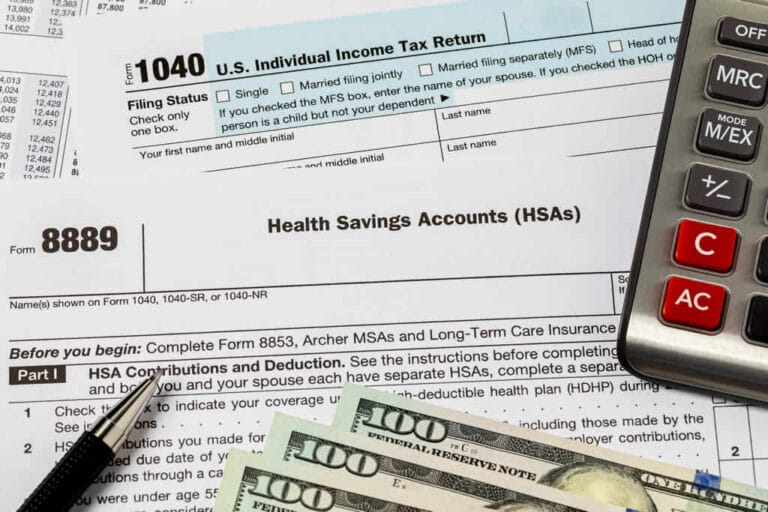Optimizing Your Withdrawal Sequence in Retirement
For $1M+ investors, the withdrawal sequence in retirement can make or break your legacy. Ron McCoy, with 40+ years of market mastery, reveals how to strategically tap accounts to slash taxes and preserve wealth. Learn elite tactics to dominate your retirement income plan.
For those with larger portfolios, retirement isn’t just about covering monthly bills—it’s about managing your assets wisely. The way you draw down your taxable, tax-deferred, and tax-free accounts can have a big effect on how long your money lasts and what you’re able to leave for the next generation.
Without a solid plan for taking withdrawals, you could end up paying more in taxes or run the risk of running out of money too soon. With decades of experience helping clients navigate every kind of market, Ron McCoy knows just how important it is to approach retirement income planning with care and discipline.
At Freedom Capital Advisors, our focus is on helping clients build withdrawal strategies that support both day-to-day living and long-term goals. This article covers why withdrawal sequencing matters and shares ideas for getting the most from your retirement savings. As always, consult a CPA for specific tax advice.
The Stakes of Withdrawal Sequencing
Withdrawal sequencing simply means planning the order and timing of your distributions. Most people have three kinds of accounts: taxable brokerage accounts, tax-deferred IRAs or 401(k)s, and tax-free Roth IRAs. Each one comes with different rules and tax impacts. Withdrawals from brokerage accounts might mean capital gains taxes, while money taken from traditional IRAs is taxed as regular income. Roth IRAs can allow for tax-free withdrawals if you meet the requirements.
If your portfolio is sizable, the order you tap each account can affect both your taxes and how long your wealth lasts. It can even influence what you pay for healthcare in retirement. Vanguard’s research shows that a smart withdrawal plan can make your savings last years longer and help lower the total taxes you pay along the way.
At Freedom Capital Advisors, Ron McCoy focuses on tax efficiency and helping clients keep their wealth working for them over the long term. Planning your retirement income carefully is key to making sure your savings last. For any tax details, always check with a CPA.
Case Study: Rethinking Withdrawal Strategies for Retirement
Jane, age 62, started retirement with a healthy portfolio spread across taxable, tax-deferred, and tax-free accounts. At first, she took withdrawals from each account in the same ratio as her holdings. While this was simple, it ended up pushing her into a higher tax bracket and raised her healthcare costs.
After teaming up with Ron McCoy, Jane reviewed her strategy more closely. By carefully considering the best time and way to tap each account, she lowered unnecessary taxes and better supported her long-term goals.
This shows why it’s important to revisit your withdrawal plan regularly, especially as your situation or the rules change. A financial advisor and a good CPA can help you keep your strategy on track for the long haul.
Key Strategies for Optimizing Withdrawal Sequence
For those with significant portfolios, a careful withdrawal plan can pay off over the years. Here are a few important tips as you think about retirement income:
- Take stock of your account types—taxable, tax-deferred, and tax-free—and learn how each one affects your taxes and finances.
- Consider starting with withdrawals from taxable accounts. This can sometimes give you more flexibility and let your tax-deferred accounts grow a bit longer.
- Hold off on tax-deferred account withdrawals if possible, especially before required minimum distributions begin.
- Let your Roth IRAs grow as long as you can. This can be helpful for late retirement needs or for passing on wealth.
- If giving to charity is part of your plan, look for ways to connect gifts with your required distributions for added benefits.
Actionable Tips from Ron McCoy
- Set aside time each year to review your portfolio and your withdrawal plan with a trusted advisor. Knowing where you stand makes decisions easier.
- Test different withdrawal scenarios. Running a few “what if” models can help you spot trouble before it happens.
- Work with tax professionals to make sure your withdrawal plan fits your overall tax picture. Having a CPA on your side is always smart.
- Stay on top of changes to retirement laws. A good advisor will keep you informed so you can update your plan as needed.
- Keep investment costs low. Review your accounts and be mindful of fees to hold on to more of your gains.
Challenges and Considerations
Retirement withdrawal planning isn’t always straightforward. Market swings, rising costs, and longer lives can all have an impact. It’s important to think about how changes in the market or in your own life could affect the amount and timing of your withdrawals.
Keep an eye on taxes, healthcare costs, and other big-picture factors that could affect your finances. Regular check-ins with your advisor and your CPA help you adjust your plan when life changes. Building in flexibility gives you a better shot at meeting your goals, even when things don’t go as planned.
Conclusion
If you’re heading into retirement with a substantial portfolio, the order you withdraw funds matters. A thoughtful, experience-backed plan can help your wealth go further and keep your goals in reach.
At Freedom Capital Advisors, we build custom strategies for every client. If you’d like a fresh look at your withdrawal plan or want help optimizing your retirement income, visit freedomcapitaladvisors.com to book a free strategy call. With the right team, you can feel confident your plan will stand the test of time.







